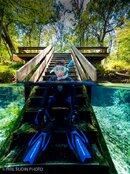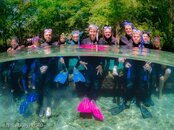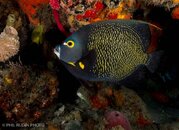You are using an out of date browser. It may not display this or other websites correctly.
You should upgrade or use an alternative browser.
You should upgrade or use an alternative browser.
Olympus OMD EM-1 MKII - Open Discussion
- Thread starter KCrofoot
- Start date
Please register or login
Welcome to ScubaBoard, the world's largest scuba diving community. Registration is not required to read the forums, but we encourage you to join. Joining has its benefits and enables you to participate in the discussions.
Benefits of registering include
- Ability to post and comment on topics and discussions.
- A Free photo gallery to share your dive photos with the world.
- You can make this box go away
PHIL RUDIN
Contributor
The Panasonic 8-18 f/2.8-4 and the Olympus 7-14mm F/2.8 pro are both excellent choices for underwater use. Both will use about the same port configurations, I.E. recommended port sizes, in most cases will be 170-180mm. In the US. at this time the difference in price between the two is that the 7-14 is $100.00 more. Keeping in mind that the Olympus 7-14 is also an 8mm lens this is what you get for the extra $100.00, a 114-75 degree lens v. 107-62 degrees AOV, a minimum focus distance of 20MM v. 23mm or over an inch closer, an F/2.8 lens through the entire zoom range and the best weather sealing in the industry. A point here is that if you shoot the Olympus 7-14 at 8mm your results should be as good or better than the Panasonic at 8mm because the extreme ends of any zoom lens generally fall off a bit in total image quality.
Second point, trying to compare the Olympus 8mm F/1.8 Fisheye lens to either rectilinear lens at the wide end is just not apples to apples. One keeps lines straight and the other does not. I have attached two examples of split images using the same eight inch port. The Olympus 7-14 at 7mm has a much flatter water interface and the vertical and horizontal lines of the decking are quite square while the 8mm Fisheye bows the water interface. Most often the 8mm fisheye will also be used with a much smaller dome port like the Zen 100 or Nauticam 140 ports for CFWA. Fisheye lenses are great for U/W photography but they hardly replace wide rectilinear lenses. If you can't afford both or only wish to have one the 8mm many be the better choice if your subject matter does not have straight lines.
The Angle fish is at the 14mm end of the Olympus 7-14 and the polyps are at the 7mm end.
Second point, trying to compare the Olympus 8mm F/1.8 Fisheye lens to either rectilinear lens at the wide end is just not apples to apples. One keeps lines straight and the other does not. I have attached two examples of split images using the same eight inch port. The Olympus 7-14 at 7mm has a much flatter water interface and the vertical and horizontal lines of the decking are quite square while the 8mm Fisheye bows the water interface. Most often the 8mm fisheye will also be used with a much smaller dome port like the Zen 100 or Nauticam 140 ports for CFWA. Fisheye lenses are great for U/W photography but they hardly replace wide rectilinear lenses. If you can't afford both or only wish to have one the 8mm many be the better choice if your subject matter does not have straight lines.
The Angle fish is at the 14mm end of the Olympus 7-14 and the polyps are at the 7mm end.
Attachments
I'm looking for the best large dome for the Olympus 7-14mm on the Olympus housing (PT-EP14).
From the reports in this discussion and elsewhere , the Olympus dome PPO-EP04(+adapter+extension) is not good option (optically). As alternative there is recent AOI DLP-07 or the older Athena OPD-F170V II (+adapter+extension), with no detail reviews with this lens. Curiously both manufacturers are rumoured to have produce domes (OEM) for Olympus.In Europe all there domes are priced very close.
Any suggestions ?
I would prefer an Olympus product, support is excellent, however it's clear the PPO-EP04 is old design adaptation.
Thanks
From the reports in this discussion and elsewhere , the Olympus dome PPO-EP04(+adapter+extension) is not good option (optically). As alternative there is recent AOI DLP-07 or the older Athena OPD-F170V II (+adapter+extension), with no detail reviews with this lens. Curiously both manufacturers are rumoured to have produce domes (OEM) for Olympus.In Europe all there domes are priced very close.
Any suggestions ?
I would prefer an Olympus product, support is excellent, however it's clear the PPO-EP04 is old design adaptation.
Thanks
Similar threads
- Replies
- 8
- Views
- 839
- Replies
- 4
- Views
- 604
- Replies
- 0
- Views
- 307
- Replies
- 2
- Views
- 887
- Replies
- 0
- Views
- 333







